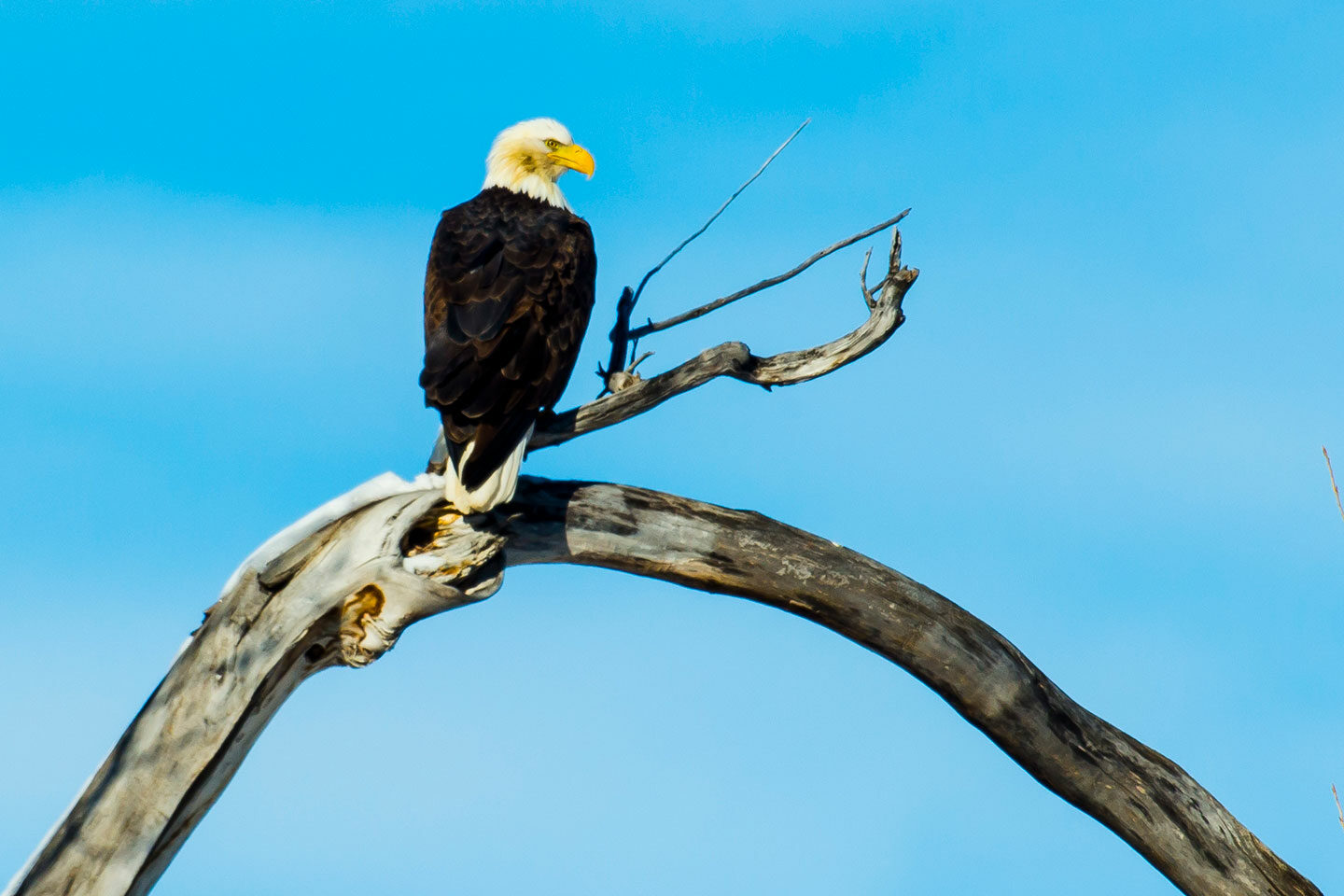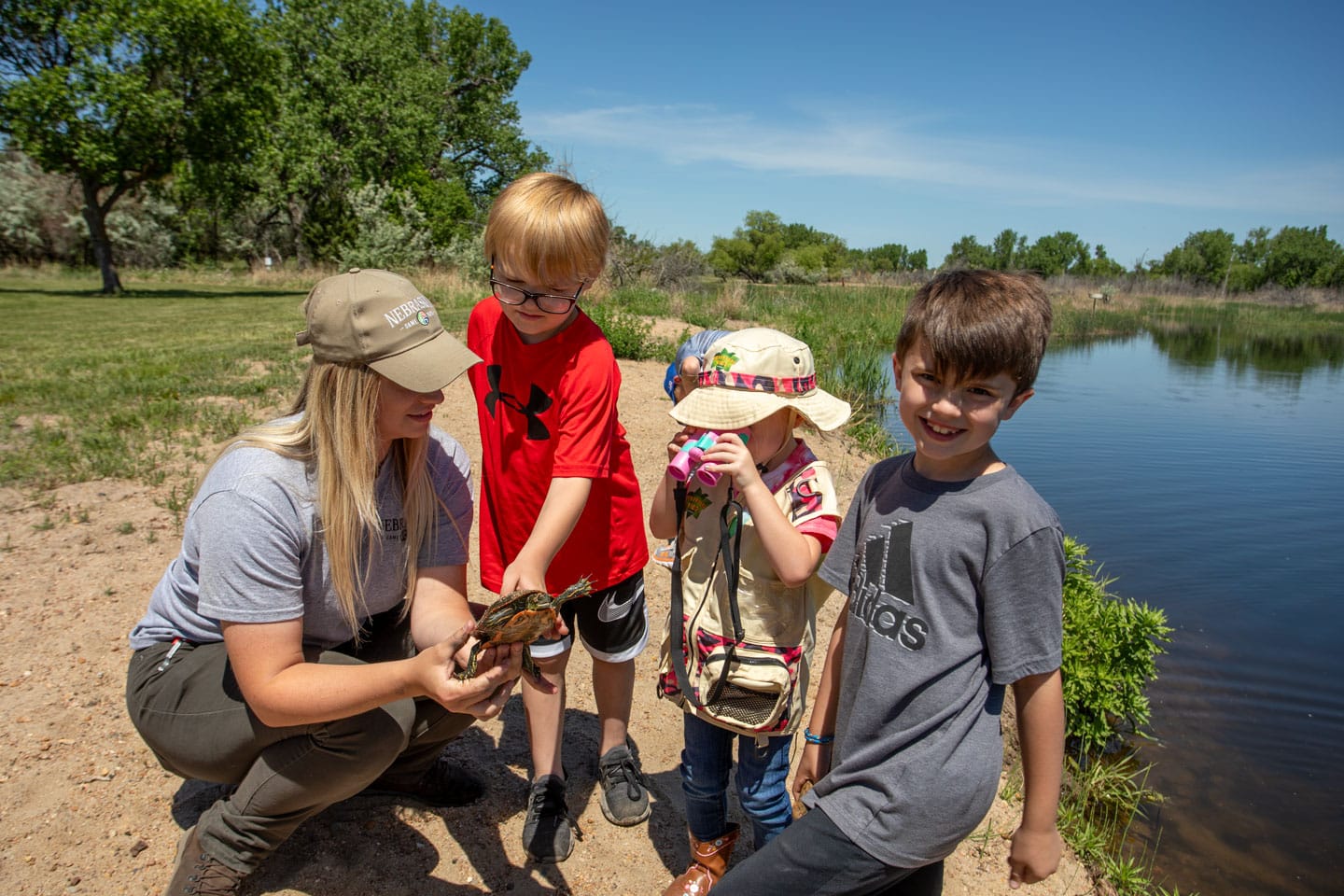Wildlife viewing timetable
Wildlife watchers can find something to observe year-round. The following is a month-by-month guide to viewing some of Nebraska’s most popular species.
January is the ideal time for bald eagle viewing across the state. Watch the snow for river otter slides. The native otters will slide on their bellies 10 feet or more across the snow as an effective mode of overland travel in winter months.
Since this playful mammal’s reintroduction in 1986, the otter project has continued working toward its goal of recovering this species to a level that will allow for their removal from the threatened species list.
Nebraska’s two species of jackrabbit, the black-tailed and the white-tailed, begin their breeding seasons. Although both were historically found statewide, the white-tailed jackrabbit is now found mainly in the northern half of the state, and the black-tailed in the southern half.
This month marks the peak of the sandhill crane and waterfowl migration through Nebraska. More than 1 million sandhill cranes stop to forage in the fertile lands along the Platte River and increase their weight for their continued northward migration. The Platte River and surrounding wetland habitats are crucial to the cranes’ successful migration.
April is when many snakes emerge from their winter den sites that are crucial habitat needed to survive the freezing temperatures of winter. Dens may be an animal burrow, a rock outcropping or the basement of a building.
A den may be used by a single individual or by a large number of individuals of numerous species. As the season warms, snakes move away from the den site to summer habitat where prey species such as small rodents and insects are abundant.
This month is the peak for the spring shorebird migration through Nebraska. Species such as long-billed curlews, marbled godwits, upland, buff-breasted and Baird’s sandpipers, greater yellowlegs and willets can be seen using wetlands and shorelines of rivers, steams and ponds throughout the state.
Their passage through Nebraska represents a crucial staging period as they fly north to their breeding areas. In the case of the buff-breasted sandpiper, more than 90 percent of the total world population stage in the eastern portion of the Rainwater Basins.
Smooth and spiny softshell turtles are at the height of nesting activity during June and July. Both species can be recognized by their very flat soft leathery shell and long extendable necks. They are found in rivers, streams and ponds across the state.
After breeding in the spring, the female digs a shallow hole on a sandbar or bank and lays 3 to 30 eggs that she then covers with soil. The eggs hatch and young emerge in August and September.
Early this month, the western prairie fringed orchid, a threatened orchid species, is blooming in the wetter tallgrass prairie remnants of eastern and north central Nebraska. This native prairie plant can grow up to 4 feet tall and its nocturnally fragrant white flowers are only pollinated by a few species of hawkmoths.
Butterflies are plentiful as they seek out food sources amongst the blooming prairie plants. Thousands of swallowtails, painted ladys, monarchs, and numerous other butterfly species complete their life cycle in the native prairies of Nebraska.
Now is a great time to grab a butterfly or wildflower guidebook and explore the beauty and diversity of the native prairies and their residents.
Swift fox pups will be dispersing from their parents this month. Found in the shortgrass prairies of western and southwestern Nebraska, they weigh just over half a pound when born.
These very rare prairie predators rapidly gain weight until reaching their adult weight of 4 to 6 pounds in late fall, roughly the size of a large house cat. Swift foxes have been recorded at speeds exceeding 30 miles per hour.
With the fall chill in the air, many Nebraska species are preparing for the winter. Bats species like the big brown bat are busy building up their fat reserves for the long winter.
Brown bats eat mostly beetles, but also consume wasps, ants, plant hoppers and leafhoppers. Particularly important are June bugs, green stinkbugs, and cucumber beetles (the adult form of corn rootworms). A colony of big brown bats can protect local agriculture from millions of rootworms each summer.
The fall migration of whooping cranes is in full swing. Each fall, whooping cranes migrate from their breeding grounds in Canada through Nebraska to their wintering grounds in Texas.
The central Platte River, the Niobrara and Loup Rivers, wetlands on the Sandhills and the Rainwater Basin are regularly used stopping areas for this endangered species once on the brink of extinction. The length of a whooping crane stopover may be as short as overnight to as long as a few weeks.
Consider participating in the Christmas Bird Count that takes place every year. Contact an Audubon center near you for more information.


